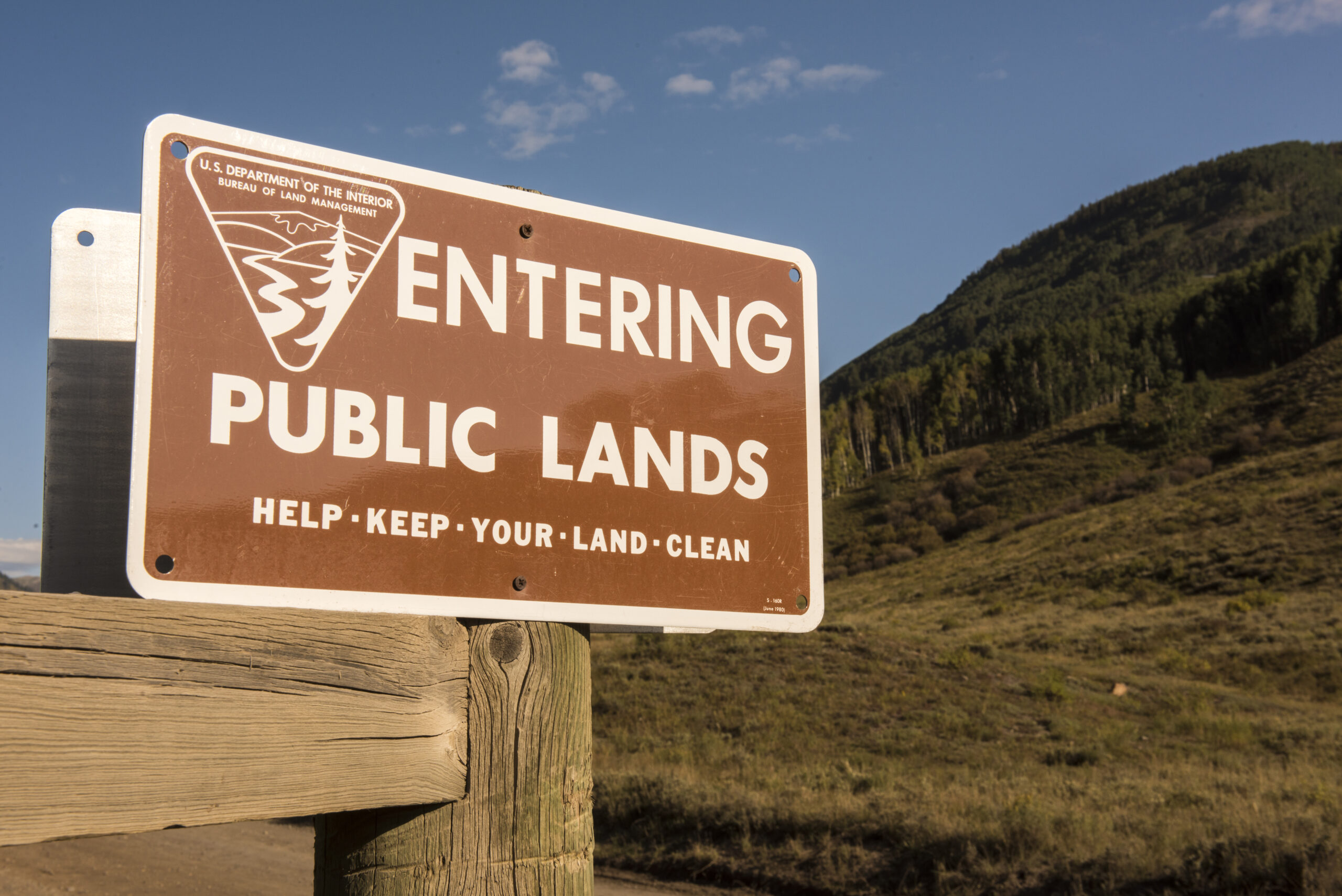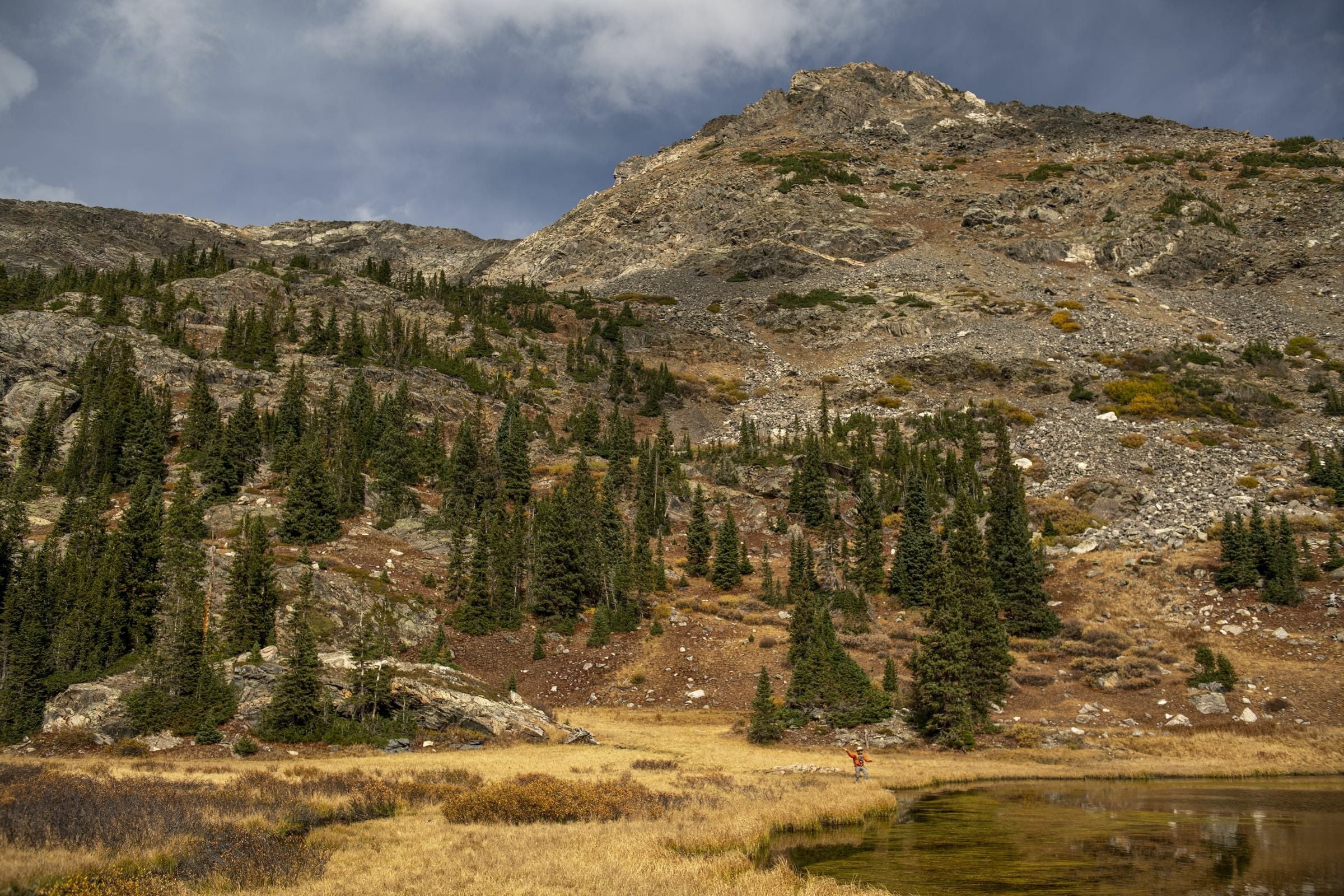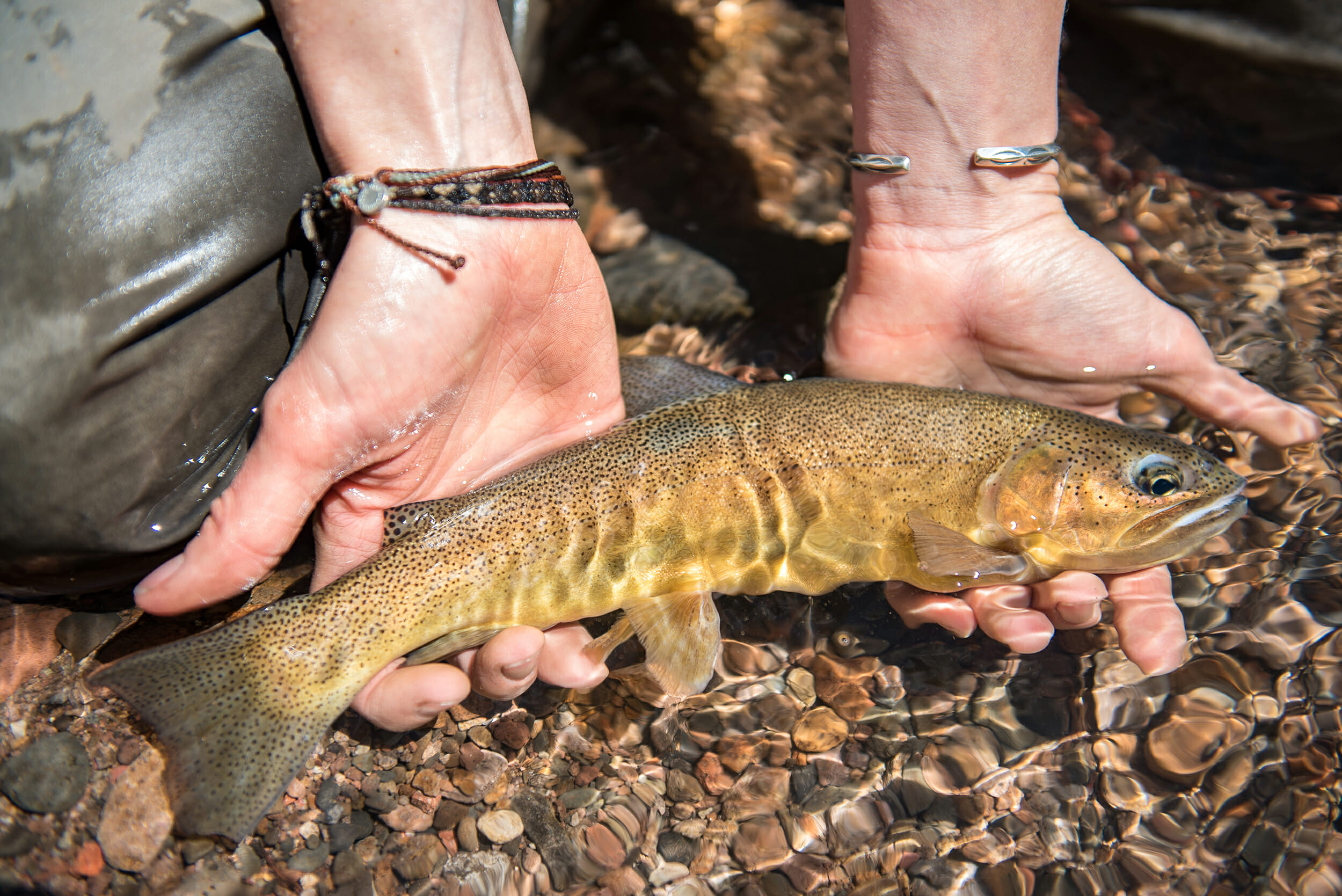
The vision and early model
By Chris Wood, President and CEO

Where are the hunters and anglers?

This was a question that kept nagging at me and my boss, U.S. Forest Service Chief Mike Dombeck. We had heard from representatives of environmental groups who said we weren’t going far enough. We had timber lobbyists in our offices, oil and gas crusaders, miners, ranchers, farmers, mayors, water users, and politicians of all stripes who said we were going too far. But somehow, the hunting and angling community was silent.
It was the mid-1990s and Mike—at the head of an agency of 30,000 people with a $5 billion budget—and I were working together on an ambitious effort to protect millions of acres of fish and wildlife habitat, the so-called roadless areas remaining on national forest land across the country. These were wilderness-quality lands generally more than 5,000 acres in size.
The public process was intense and rancorous. During a roughly two-year period, we held hundreds of public meetings around the country. More than 1.8 million people commented on our proposal, a record. The vast majority wanted more protection for roadless areas. The debate rocked and rolled, and in the end, we came out with a rule that protected more than 58 million acres of land from most development on the national forest system. Consider that a single national forest is typically 1 to 2 million acres in size, and you’ll get a sense of the scale of the effort. This was the very best of what was left of the agency’s multiple-use land, the more critical hunting and fishing habitat. Yet, with a few notable exceptions like the late, great Tim Lillebo and legendary fly fisherman and Trout Unlimited member Bud Lilly, people touting themselves as hunters and anglers rarely spoke up and almost never came to visit us in Washington, D.C.
I remember thinking maybe the roadless rule was too political for them. Maybe hunting and angling organizations lacked the bandwidth, but their voice was noticeably absent while they stood with more to gain than nearly every other interest.
Consider that roadless areas of the national forest systems represent about two percent of the American land-base but nearly 25 percent of our threatened, endangered, and sensitive species depend on them.
In Idaho, roadless areas contain about 70 percent of the remaining bull trout habitat; 75 percent of the remaining chinook salmon and steelhead habitat; and nearly 60 percent of the remaining habitat for westslope cutthroat trout in the state. The longest centerfire rifle seasons for elk were in roadless areas. Almost 70 percent of Wyoming’s Yellowstone cutthroat trout are found in undeveloped areas. More than half of the state’s Colorado River cutthroat trout are found in roadless areas.
For each of the western states, the value of public land roadless and wilderness areas for fish and wildlife and hunting and fishing was clear. Less clear was where were the hunters and anglers?
After the roadless rule was enacted, I left the Forest Service. My hope was to work with a conservation organization and try to create a voice on Capitol Hill and state legislatures analogous to the environmental community and the regulated industries, but in this case with, and for, anglers and/or hunters.

Born of innumerable hikes in fields and forest, and traversing rivers, streams and ponds, anglers and hunters have a visceral connection to the land. Our connection to our lands and waters is not detached. It is immediate and intimate, and real. Channeling that connection could serve as a powerful shot-in-the-arm to conservation.
Hunters and anglers, of course, have a long history of conservation. But, for many years, the voices of hunters and anglers had been taken for granted by one political party, and largely ignored by the other.
Trout Unlimited was my first, and really, only, choice. The organization had a motivated grassroots corps. They had a professional, albeit small, staff. And, perhaps most importantly, Trout Unlimited members understood the importance of public lands to hunting and fishing.
After I arrived at Trout Unlimited in 2003, we decided to focus on three topics: roadless protection, responsible energy development, and cleaning up abandoned mines.
Here is how we described our statement of intent back then:
“All our actions on the land are ultimately reflected in the quality of fish and wildlife habitat. More than 50 million Americans fish and hunt. Too often, their voices and interests are lost in the din of controversy that has come to define public land management. Our intent is to cut through the noise and:
- Develop sound scientific and technical information demonstrating the importance of public lands to coldwater fisheries, wildlife, and fishing/hunting opportunities;
- Build an alliance of Trout Unlimited members, wildlife and fisheries conservation groups, hunting and angling clubs, and fish and wildlife professionals to advocate for management policies on public lands that protect the long-term health of coldwater fisheries as well as wildlife; and
- Inform the broader public of the importance of public lands to protecting and restoring coldwater fisheries and wildlife habitat, and the tremendous fishing, hunting, and other outdoor opportunities public lands provide.”

From the very beginning, we adopted a framework that has served us well ever since: Hire local, legitimate anglers and hunters to do the real work of organizing anglers and hunters. It was, and has been, a foolproof standard. Our first hires way back then were the real thing—they knew how to field dress a bull elk, catch a cutthroat on a size 16 parachute Adams, and call in a wild turkey. The same can be said of our staff today. On-the-ground, anglers and hunters to marshal those of their own ilk.
I look back at that statement of intent and smile. We did not get everything right, we need, for example, to hire more women and people of color to help us educate, organize, and mobilize more anglers and hunters, but we sure accomplished a lot. Imitation is the finest form of flattery, and today multiple organizations are focused on hunter-angler conservation.
Trout Unlimited was there first. Trout Unlimited brought anglers and hunters back into conservation and, specifically, public lands advocacy, after a too-long absence.
Trout Unlimited has been the tip of the spear in engaging anglers and hunters protect national monuments such as the Rio Grande del Norte in New Mexico, Browns Canyon in Colorado, and Cascade Siskiyou in Oregon. Not only did we keep the protections of the roadless rule intact, we strengthened them for 13 million acres in Idaho and Colorado. Hunters and anglers have stood up for places like Bristol Bay in Alaska and the Truckee River in California.
Our work resulted in new multiple wilderness designations for places such as the Copper-Salmon wilderness in Oregon, Pine Forest in Nevada, and the Frank and Jeanne Moore Wild Steelhead Sanctuary in Oregon’s North Umpqua watershed.

Native Gila trout.
We organized anglers and hunters to negotiate settlements with energy companies to retire energy leases in sensitive landscapes such as Colorado’s Roan Plateau and the Wyoming Range, and played a lead role in ensuring that public lands such as the White River National Forrest in Colorado were placed off limits to new oil and gas leasing. We even managed to lead legislation through Congress that placed 1.2 million acres of some of the finest fish and wildlife habitat in Wyoming off limits to energy development.
We educated, organized, and mobilized hunters and anglers to withdraw important fish and wildlife habitats from mining in places such as the Methow headwaters in Washington, the Grand Canyon in Arizona, and the Yellowstone in Montana. We’ve defended public lands takeover in statehouses across the West, and remained nimble and innovative when the politics of division seemed unnavigable. We’ve protected hunting and fishing lands in U.S. Congress, the administrations of Presidents from both parties, state legislatures and state policies, to mention only a few.
In the future, I look forward to Trout Unlimited engaging more women, people of color, and younger anglers and hunters in our work. After all, representation is relevance. Women, for example, are the fastest growing sector of the fly-fishing industry, and we have too few women organizers.
We need to do a better job learning from and strengthening our partnerships with tribes who manage some of the most important trout and salmon habitats in the country. We need to listen and learn from organizations such as Brown Folks Fishing and Soul River so that we can better engage people of color in the wonder of the outdoors, and the need to protect and conserve it. America is changing, and we need to change, too.
Our kids will remember the lands and waters we protected. I will remember the many friends I have made along the way. People I would walk through fire for. People who have built houses in my heart.
This is the story of Trout Unlimited’s ground-breaking legacy of protecting the sporting heritage of our country, but it is a story that is only just beginning to unfold. Where are the hunters and anglers? We are here, and we’re not going away.
1
2
3
4
Growth and change
- Innovation and conservation
- Playing the long game
- Off Road Vehicle and Sportsmen Ride Right
- Oregon and Arizona Mineral Withdrawals
- Overcoming congressional gridlock with public lands planning
- Working in state legislatures when Washington, DC, is broken
- The importance of national monuments
- Fight against selling state land
- Alaska Tongass National Forest
- Alaska Pebble Mine
- Utah Roadless
- Washington Steelhead fishing regulation changes
- Land and Water Conservation Fund
5